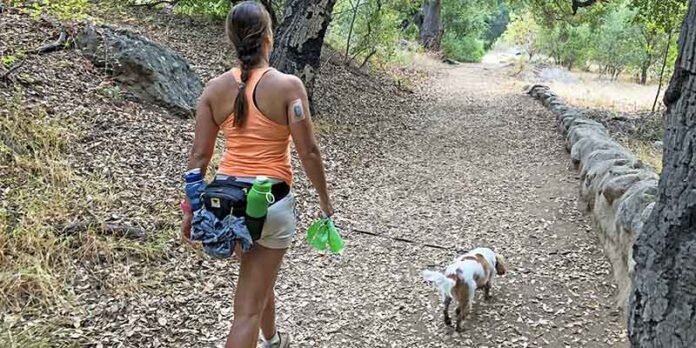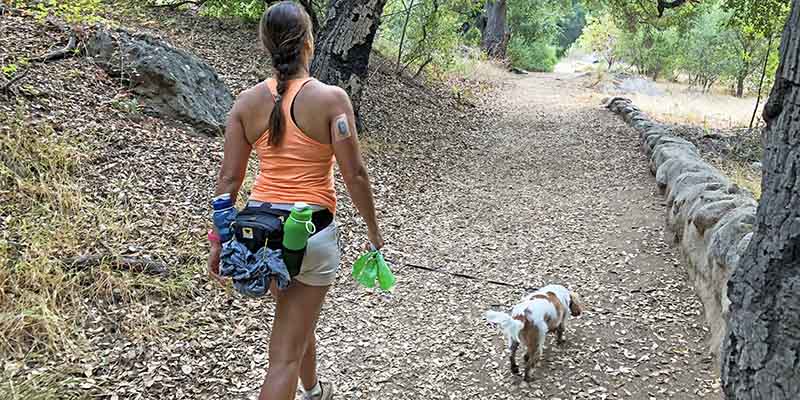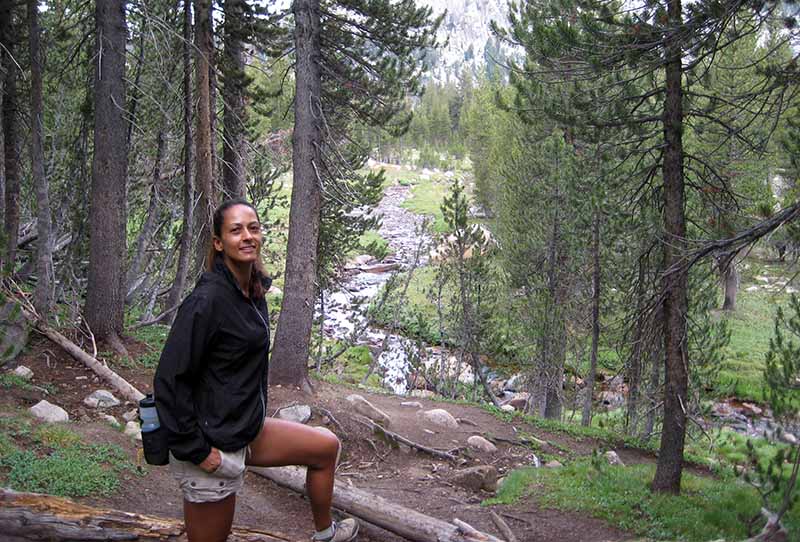One of the things I love most about living in Southern California is that I can be outside wearing shorts pretty much every day of the year. It’s like summer year round and I take full advantage of it by hiking a lot.
Hiking with diabetes is very doable if you prepare well, bring your diabetes gear, and have a good routine for testing and adjusting your blood sugar before, during, and after the hike. I have it down to a science by now, and I always follow the three steps below.
Research the hike
I always look up a new hike to find out how long it is and if it includes any elevations. There are plenty of resources online on where to find good trails, their conditions, length, and elevation.
We usually don’t want to hike more than 2 hours and prefer there to be no crazy elevations (except when we go to places like Yosemite or Hawaii). If the hike is more challenging than our normal hikes, I need to adjust my insulin accordingly and bring extra snacks.
Pack what’s needed
I have a cool fanny pack that I always bring along on hikes. It was originally a gift from me to my husband, and I guess it came with a transport mule = me 😀
I always bring:
- Diabetes gear – My glucose meter (Roche Accu-Chek), my CGM receiver (Dexcom G6) and my insulin pen (InPen)
- Emergency gear – Glucose tablets, fruit strips and perhaps a glucagon emergency kit, such as Baqsimi, Gvoke or Lilly Glucagon
- Water – Minimum 1 liter
- Snacks – Depending on how long we’ll be gone, I might bring a full lunch (like a chicken wrap) or just a few rice cakes or a quest bar.
- Other stuff – Phone, band-aids, sunscreen, etc.
Adjust blood sugar levels and insulin
This is also a 3-step process (I turn everything into 3-step processes if I can. It makes it so much easier to remember):
Measuring and adjusting my insulin before leaving home. If we leave right after a meal and I expect to hit the trail within 2 hours of eating, I’ll reduce my bolus insulin by 25-50% for that meal.
Measuring and potentially adjusting when we get to the hike. I always test my blood sugar level before we start the hike. As with other cardio activities, I know that I need to be careful not to have too much active insulin on board or my blood sugars may go low during the hike. However, if I’m trending above 170 mg/dL (9.4 mmol/L) and have less than ½ unit active insulin on board, I’ll usually adjust with ½-1 unit of insulin.
IMPORTANT: This is what works for me! You need to find the levels that work for you.
If my sugars are in the 90-170 mg/dL (5-9.4 mmol/L) range, I’m usually good. If they are below that, I’ll munch on a rice cake (easy portable 7 g of carb) before starting the hike.
Measure during and after the hike. I rely on my CGM while on the hike but also test occasionally. If the hike includes very steep inclines, I’ll even include that in my calculation for insulin dosage for the rest of the day/night and potentially reduce my night basal insulin.
When you walk up and down a steep elevation, you activate pretty much all the large muscle groups in your legs and that can impact your blood sugars for several hours after you complete your hike. So remember to test your blood sugar more frequently for the rest of the day if you’re new to hiking with diabetes.
Get out there and enjoy nature
There are so many great places to explore in this world of ours and there’s no way my diabetes is going to stand in my way, and it shouldn’t stand in yours either. If you plan ahead and bring all the right gear, hiking with diabetes can be done in a safe manner.
Hiking is both great exercise and a way to be social. If you don’t have a hiking partner, there are plenty of hiking MeetUp groups online or you can try contacting your local ADA or JDRF chapter to find others with diabetes to hike with.
Suggested next posts:
If you found this guide to hiking with diabetes useful, please sign up for our newsletter (and get a free chapter from the Fit With Diabetes eBook) using the form below. We send out a weekly newsletter with the latest posts and recipes from Diabetes Strong.



